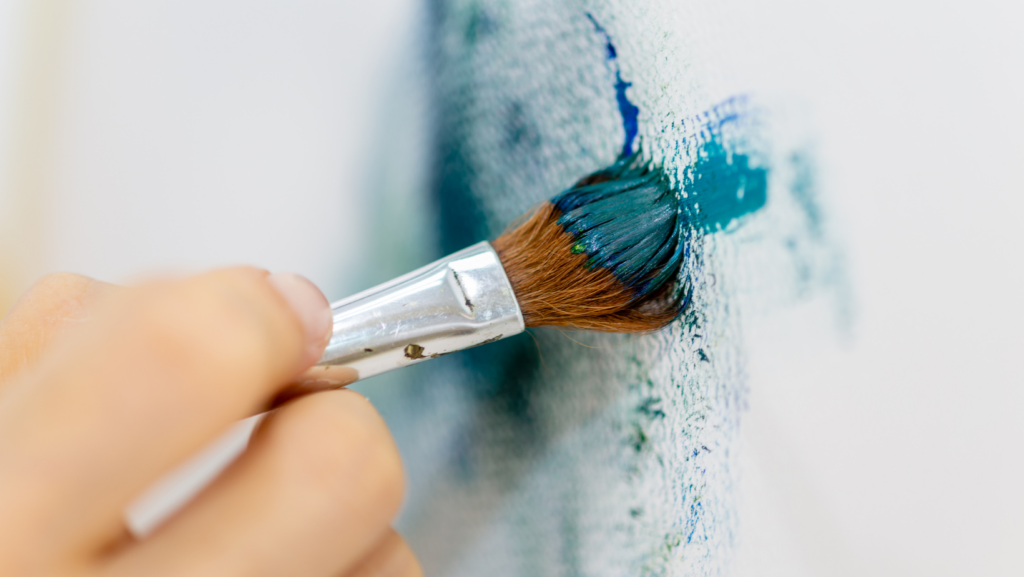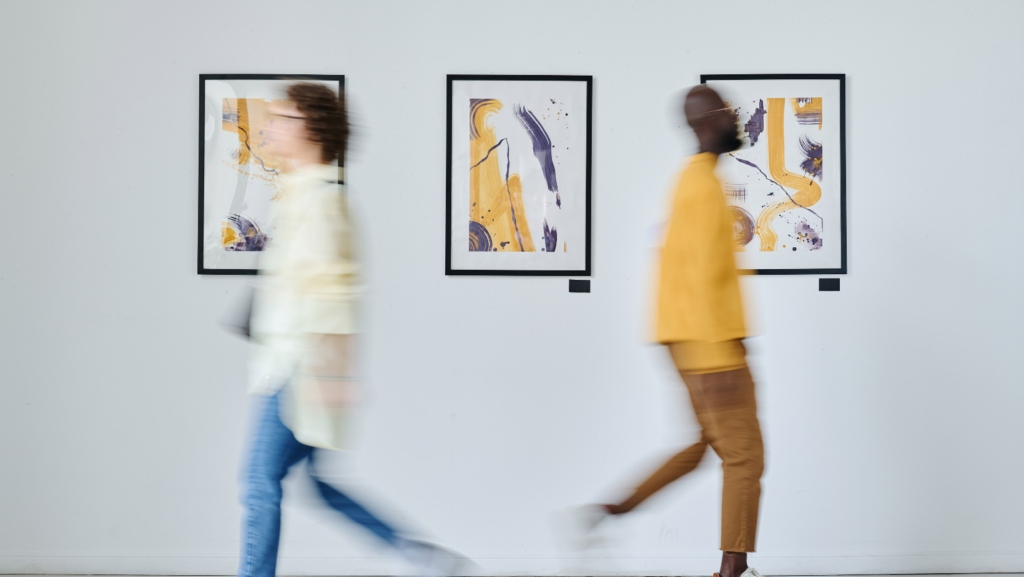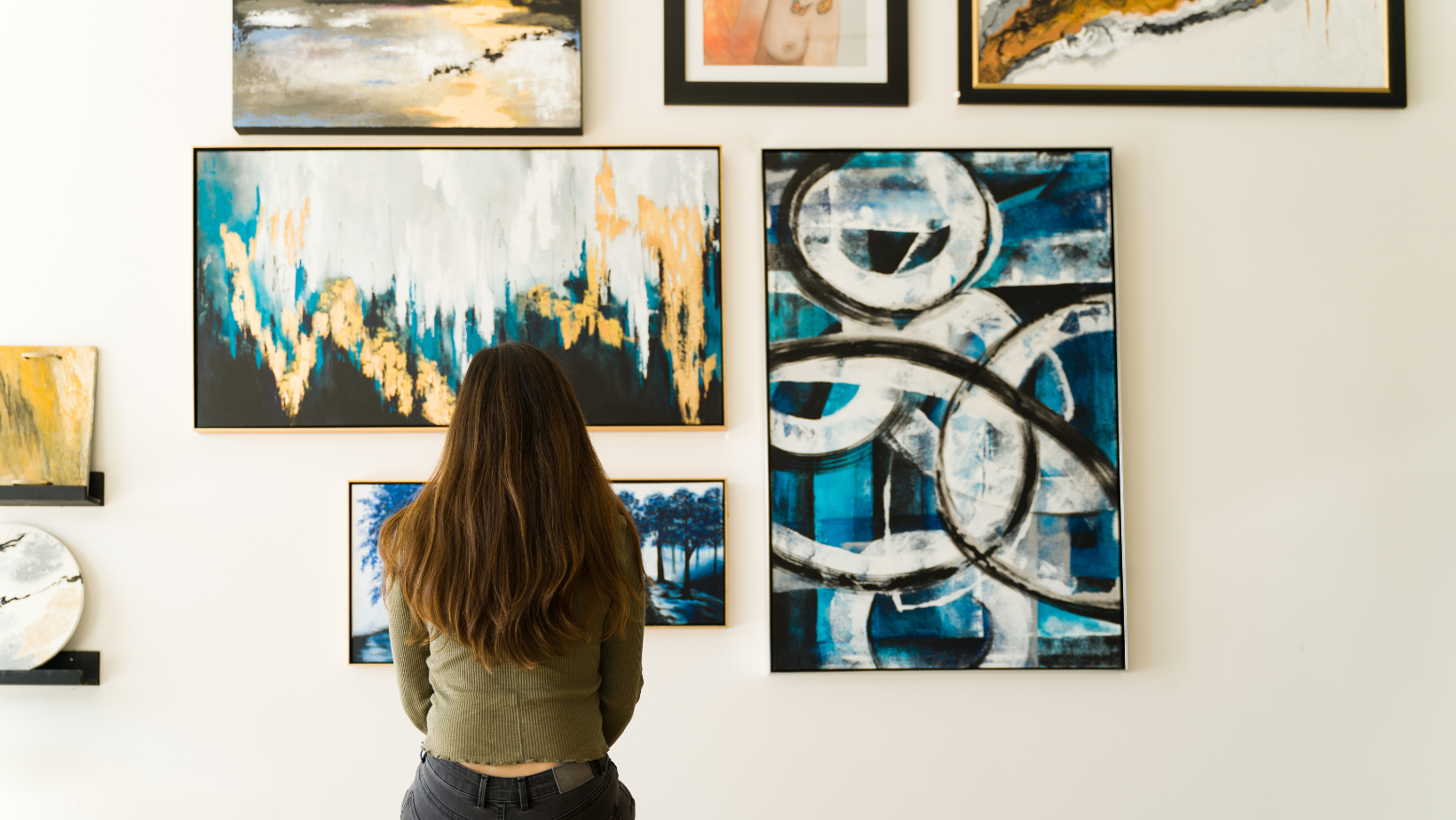Hello, fellow art adventurers! Have you ever stared at a seemingly random blend of colors and wondered what the artist was thinking? Abstract art is a beautiful puzzle, inviting each viewer to interpret its mysteries. Today, let’s uncover the essence of abstract art, explore some iconic works, and discover where you can experience its brilliance in 2025.
What is Abstract Art?
Abstract art defies traditional boundaries. Unlike realistic paintings that represent people, landscapes, or objects, abstract art focuses on form, color, texture, and line to express emotions and ideas. This art form rose to prominence in the early 20th century, with artists moving away from literal representations to delve into more symbolic and conceptual territory.
Think of abstract art as a visual language. A bold red slash might scream passion or anger, while a swirling blue pattern could whisper tranquility. The beauty lies in its subjectivity—each person experiences it differently, shaped by their own feelings and imagination.
Famous Abstract Paintings and Their Meanings
Let’s explore some iconic pieces and the emotions they evoke:
1. “Composition VII” by Wassily Kandinsky (1913)
Kandinsky, often dubbed the father of abstract art, believed that colors and forms had their own spiritual resonance. <ahref “https://www.wassilykandinsky.net/work-36.php”> Composition VII </a>is a chaotic yet harmonious explosion of colors, representing themes of rebirth and apocalypse. Kandinsky aimed for his work to resonate like a symphony—full of movement and energy, evoking emotions without directly depicting a scene.
2. “Broadway Boogie Woogie” by Piet Mondrian (1942-1943)
Inspired by the energy of New York City, Mondrian’s painting uses blocks of primary colors to mimic the rhythm of jazz music and the layout of Manhattan’s streets. This vibrant piece celebrates modernity and urban life.
3. “No. 5, 1948” by Jackson Pollock
Pollock revolutionized art with his drip technique, layering paints in dynamic, web-like compositions. In No. 5, 1948, the intertwining patterns exude raw energy, leaving the interpretation to the viewer. Some see chaos, while others perceive an intricate order.
4. “Untitled” by Cy Twombly
Twombly’s seemingly spontaneous scribbles and gestures on canvas embody the essence of abstract art—pure emotion and instinct. His works are deeply personal, often inspired by poetry, mythology, and history.
5. “Black Square” by Kazimir Malevich (1915)
Malevich’s Black Square is a radical statement. It’s not just a painting but a declaration—art can exist purely for its own sake, free from representing anything. The black square is both nothing and everything, a starting point for new artistic ideas.
Why Abstract Art Matters

Abstract art challenges us to look beyond the obvious. It doesn’t hand over answers; instead, it asks questions. It invites you to:
- Feel rather than analyze.
- Imagine rather than observe.
- Interpret rather than accept.
For many, abstract art serves as a mirror, reflecting their own emotions, thoughts, and perspectives.
Where to See Abstract Art in 2025
If you’re ready to experience the magic of abstract art in person, here are some must-visit exhibitions this year:
1. “Kandinsky’s Universe” at the Solomon R. Guggenheim Museum, NYC
Dates: February 15 – May 18, 2025
This comprehensive exhibit explores Kandinsky’s journey from figurative to abstract art. Expect a visual feast of his bold colors and spiritual compositions.
2. “Cy Twombly at Gagosian” in Manhattan
Dates: January 23 – March 22, 2025
Dive into Twombly’s poetic and emotive scribbles. This exhibit showcases some of his most iconic works, revealing the depth of his abstract narratives.
3. MoMA’s Abstract Art Retrospective
Dates: April 2025 – September 2025
The Museum of Modern Art will host a sweeping retrospective, featuring works by Mondrian, Pollock, and more. A special section will explore the evolution of abstract art over the decades.
4. Tate Modern, London: “The Abstract Revolution”
Dates: March – August 2025
If you’re in the UK, this exhibit celebrates the pioneers of abstract art, including Malevich and Kandinsky, alongside contemporary voices continuing the tradition.
5. Centre Pompidou, Paris: “Abstract Emotions”
Dates: June – December 2025
This exhibit delves into how abstract art evokes feelings, featuring works by artists like Helen Frankenthaler and Mark Rothko.
How to Appreciate Abstract Art

If abstract art feels intimidating, here’s a simple guide to enjoy it:
- Take Your Time: Don’t rush. Let the colors and forms wash over you.
- Feel First, Think Later: What emotions does the piece evoke? Happiness? Sadness? Curiosity?
- Be Open to Interpretation: There’s no right or wrong answer. Your perspective is as valid as anyone else’s.
- Learn About the Artist: Understanding their inspirations and techniques can add depth to your experience.
A Personal Note
When I first saw Pollock’s No. 5, 1948, I thought, “What’s the big deal? It’s just paint splattered everywhere.” But as I stood there longer, I felt its energy—a chaotic yet mesmerizing dance of lines and colors. It reminded me of life itself: unpredictable, messy, and beautiful.
Abstract art doesn’t always make sense, and that’s okay. Its power lies in its ability to connect with us on a deeply personal level. Whether it’s through Kandinsky’s spiritual compositions or Twombly’s emotive scribbles, there’s something magical about stepping into a world where colors and forms speak louder than words.
So, what’s your take on abstract art? I’d love to hear your thoughts! Maybe you’ll even find yourself visiting one of these exhibitions this year and discovering your own favorite piece. Happy exploring!

Leave a Reply